#gearchanger
Explore tagged Tumblr posts
Text
Active Suspension Systems: Enhancing Ride Comfort with Chassis Controls

Introduction
Vehicle dynamics, safety, and comfort have all seen substantial improvements as a result of the development of automotive technology. Suspension systems are one area that has made impressive improvement. Active suspension systems have been more popular recently because of their capacity to improve ride comfort through complex chassis controls. Traditional passive suspension systems have been in use for decades. This article gives a basic overview of active suspension systems, emphasizing their operation, advantages, and effects on the driving experience as a whole.
Understanding Suspension Systems
Any vehicle’s suspension systems, which control how the tires interact with the road surface, are an essential component. They perform a number of vital tasks:
Ride Comfort: Suspension systems minimize vibrations and shocks transferred to the vehicle’s occupants by absorbing and dampening the forces generated by uneven road conditions.
Vehicle Stability: Suspension systems aid in maintaining tire contact with the ground, ensuring the best possible traction and stability during cornering, braking, and accelerating.
Handling: Suspension systems have an impact on how a vehicle handles, including how responsive it is to driver inputs and how stable it is on the road as a whole.
Types of Suspension Systems
Passive and active suspension systems are the two main categories.
Passive Suspension Systems: For suspension, passive systems rely on fixed mechanical parts like springs and shock absorbers. They provide a simple and dependable solution but do not adjust to shifting traffic patterns or driving circumstances.
Active Suspension Systems: Active systems, on the other hand, use cutting-edge technology and sensors to continuously and instantly alter the suspension parameters. Active suspensions can give a superior balance of ride comfort and handling performance because of their adjustability.
How Active Suspension Systems Work?
Active suspension systems use a variety of sensors to track the motion of the car as well as outside elements including the road’s condition, the driver’s input, and the speed of the car. The central control unit receives real-time data from these sensors and modifies the suspension settings as necessary. The following are some of the essential parts and procedures of active suspension systems:
Sensors: Accelerometers, wheel speed sensors, height sensors, and other types of sensors can be used as these. They continuously gather information about the movements of the vehicle and outside variables.
Control Unit: A centralized control unit analyses sensor data and quickly decides how to change the suspension settings.
Actuators: To modify the suspension’s properties, such as changing the damping rates or the ride height, electric or hydraulic actuators are utilized.
Adaptive Algorithms: Complex algorithms known as adaptive algorithms determine the ideal suspension settings based on input from the driver, sensor data, and predetermined performance standards. These algorithms make sure that the suspension system reacts to shifting circumstances swiftly and successfully.
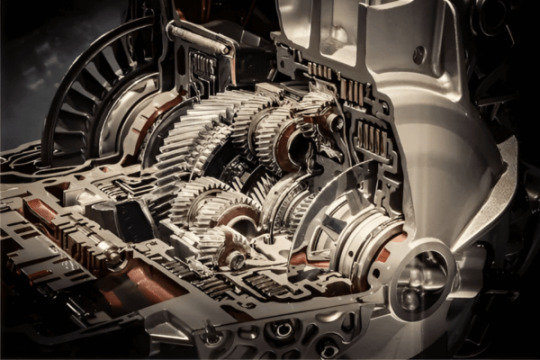
Benefits of Active Suspension Systems
Compared to passive suspension systems, active suspension systems provide the following benefits:
Improved Ride Comfort: Active systems can instantly correct road irregularities, giving passengers a smoother and more comfortable ride.
Better Handling: These systems have the capacity to modify the suspension settings to enhance grip and stability during turns, which improves handling and control.
Customizable Driving Modes: Multiple driving modes are available on many active suspension systems, allowing drivers to adjust the characteristics of their cars to suit their tastes. These modes range from a relaxing “soft” mode to a sporty “firm” mode.
Safety: In difficult driving circumstances, active suspensions can increase vehicle stability and lower the risk of accidents.
Advantages of Active Suspension Systems
Through chassis controls, active suspension systems have many benefits that considerably improve ride comfort. These technologies are made to adjust and improve the suspension settings of a car in real time, making driving more comfortable and pleasant. Here are a few significant benefits of active suspension systems:
Improved Ride Comfort: Better Ride Comfort Road irregularities, bumps, and vibrations are expertly reduced by active suspension systems. They can give riders a smoother, more comfortable ride by continuously modifying the suspension parameters. This benefit stands out more on bumpy or uneven roadways.
Improved Handling and Stability: Active suspension systems have the capacity to dynamically change damping rates and other suspension properties. As a result, the vehicle is more stable when cornering, braking, and accelerating. The suspension can adjust to various driving situations, improving performance and safety.
Reduced Body Roll: By keeping the car level and ensuring that all tires have optimal traction on the road, these systems can reduce body roll during corners. This boosts driver confidence and comfort while also improving handling.
Customizable Driving Modes: Multiple driving modes are available in many vehicles with suspension systems, allowing the driver to select between various comfort and performance levels. For instance, a “Comfort” mode might prioritize a comfortable and smooth ride, whereas a “Sport” mode might tighten the suspension for a sportier driving experience.
Adaptive Response to Changing Conditions: Active suspension systems are fitted with sensors that continuously monitor a number of variables, such as the road’s conditions, the vehicle’s speed, and the driver’s input. The control unit processes this data and modifies the suspension settings as necessary. The suspension is always tuned for the current driving situation thanks to its adaptability.
Enhanced Off-Road Capability: Active suspension systems can be very helpful in off-road cars. In addition to improving off-road traction and articulation, they can adapt to adverse terrain to provide a smoother, more controllable ride.
Future Integration with Autonomous Driving: Active suspension systems are positioned to play a significant part in autonomous vehicles in the future integration with autonomous driving. They can assist in making up for a lack of human reactions and anticipation by maintaining ideal vehicle dynamics while constantly reacting to shifting road circumstances.

Disadvantages of Active Suspension Systems
While suspension systems have many benefits for improving ride comfort and driving performance, they also have significant drawbacks and difficulties. When assessing the installation of such systems, it’s critical to take into account the following disadvantages:
Cost: Compared to conventional passive suspensions, suspension systems are more complex and technologically advanced. Due to the greater manufacturing and maintenance expenses caused by this complexity, active suspension-equipped automobiles are more expensive to buy and maintain.
Reliability Concerns: Active suspension systems are dependent on a large number of sensors, control units, and electrical parts. Any of these parts going bad can result in suspension issues and possibly a worsened ride quality. It is essential to guarantee these systems’ dependability.
Weight: The vehicle’s active suspension parts, including the sensors, actuators, and control units, are heavier. Even while improvements in materials and design have somewhat lessened this problem, the extra weight can still have a negative impact on handling and fuel economy.
Complexity for Do-It-Yourself Repairs: Active suspension systems can be challenging for car owners who enjoy working on their own repairs and customizations. DIY updates and maintenance on these systems are more challenging, if not impossible, due to their complexity.
Limited Availability: Active suspension systems are still optional and frequently found only in more expensive or luxurious versions. Because of this restricted accessibility, many drivers are unable to take advantage of suspension systems’ advantages.
Adaptation Delay: Active suspension systems are intended to quickly react to shifting road conditions, however, there may be a little delay in their response. The system’s capacity to react to sudden, unforeseen risks or barriers may be hampered by this delay.
Potential for Less Tactile Sensation: According to some auto enthusiasts, active suspension systems have the potential to give drivers less tactile sensation through the steering wheel and chassis. For individuals who prefer spirited driving, this could make it harder to feel connected to the road, making driving less fun.
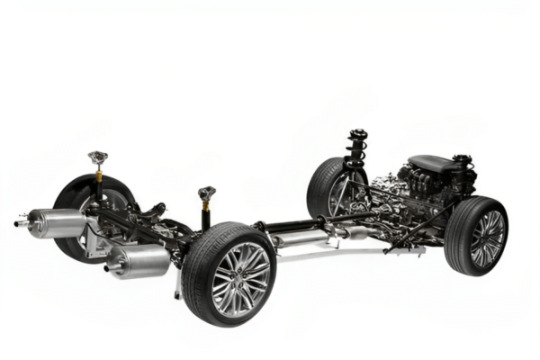
Conclusion:
In conclusion, active suspension systems represent a remarkable advancement in automotive technology, offering a range of benefits that significantly enhance ride comfort and vehicle performance through chassis controls. These systems are designed to adapt and optimize suspension settings in real-time, providing a smoother, safer, and more enjoyable driving experience.
The advantages of suspension systems include improved ride comfort by minimizing the impact of road imperfections and vibrations, enhanced handling and stability, reduced body roll, customizable driving modes, adaptive responses to changing conditions, decreased noise and vibration in the cabin, increased traction and safety, and even the potential for longer tire life. Furthermore, these systems are well-suited for off-road applications and hold promise in the context of autonomous driving.
However, it’s important to acknowledge the disadvantages and challenges associated with suspension systems, including their higher cost, maintenance complexity, reliability concerns, added weight, limited availability, potential for over-complication, energy consumption, adaptation delay, and the perception of reduced feedback for driving enthusiasts.
Ultimately, the adoption of active suspension systems should be considered carefully, taking into account the specific needs and preferences of both automakers and consumers. As technology continues to advance, active suspension systems are likely to evolve and become more widespread, further enhancing the driving experience and setting new standards for ride comfort and chassis control in the automotive industry.
#gearchanger#dorleco#controlsystem#ADAS#ControlStrategies#stroke#automotive#controlunit#PowertrainControl#Anti-lock Braking System
0 notes
Video
324 Morris Minor 4 door (Series V) (1968) TPG 156 F by Robert Knight Via Flickr: Morris Minor 1000 Series V (1962-72) Engine 1098cc S4 OHV Production 847,491 (Series III and Series V) Registration Number TPG 156 F (Surrey) MORRIS ALBUM www.flickr.com/photos/45676495@N05/sets/72157623690377489... Designed by Sir Alec Issigonis for William Morris's Nuffield Group the Morris Minor made its debut at the 1948 Earls Court Motorshow . The original Minor MM series was produced from 1948 until 1953, the range included a 2 door and 4 door four seater saloon, and a convertible An instant success and the baby car of its day, the new car featured rack and pinion steering, torsion bar independent front suspension and superb handling. Although the Minor was originally designed to accept a flat-4 engine, late in the development stage it was replaced by a 918 cc S4 side valve engine. The Series II was substantially re-engineered following the merger of the Nuffield Organisations merger with Austin (forming BMC), Cosmetically the car now had raised front lights in the wings, rather than at the sides of the grille. As part of a rationalisation programme to reduce the production of duplicate components for similar vehicles, the Minor drivetrain was completely replaced with an Austin-derived engine, gearbox, prop shaft, differential and axle casing. The more modern Austin-designed 803 cc (49.0 cu in) overhead valve A-series engine, designed for the Austin A30 which proved more lively than the 918cc SV it replaced. An estate version was introduced in 1952, known as the Traveller featuring an external structural ash (wood) frame for the rear bodywork, with two side-hinged rear doors. A horizontal slat grille was fitted from October 1954,[ as well as a new dashboard with a central speedometer 269,838 examples of the Series II had been built when production ended in 1956 In 1956, the Minor received a major programme of updates as the Series III Minor 1000. Now powered by a 948cc variant of the BMC A-Series engine, which increased fop speed from 63mph to 75mph. the engine was mated to a revised gearbox with longer ratios and a shorter gearchange. A series of changes to the body pressings allowed a wraparound rear windscreen and a curved front screen In 1961 the semaphore-style trafficators were replaced by flashing direction indicators In 1962 the final Series Minor 1000 (ADO 59) was launched the 'Series IV' designation having been assigned to the Morris Mini Minor. A new, larger 1098cc version of the BMC A Series engine with a Harry Weslake designed cylinder head Although fuel consumption suffered moderately at 38 mpg, the Minor's top speed increased to 77 mph and a significant increase in torque, this revised engine was mated to a new stronger gearbox and the size of the front drum brakes increased. The interior was refreshed, and revised again in 1964. Diolch am 92,828,339 o olygfeydd anhygoel, mae pob un yn cael ei werthfawrogi'n fawr. Thanks for 92,828,339 amazing views, every one is greatly appreciated. Shot 23.04.2022 at the Bicester Spring Scramble, Bicester, Oxfordshire 158-324
#Morris#British#1960s#1968#Morris.Minor#BMC#BMC.A.series#Sir.Alec.Issigonis#William.Morris#Swinging.Sixties#ADO58#Bicester.April.2022#TPG156F#Registered.in.Surrey#1945-70#Auto#Automobile#Car#cars#Classic#Motor#worldcars#flickr
21 notes
·
View notes
Text
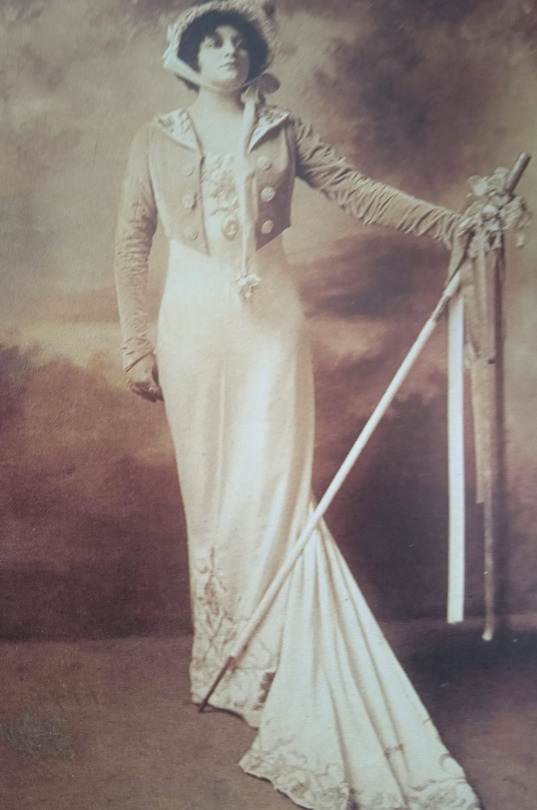
Claudia Muzio, nicknamed 'the divine' before Maria Callas, as Tosca at the Met (12/16/1918)
From More legendary voices by Douglas, Nigel:
She was born in a house on the Piazza del Duomo in the university town of Pavia, some twenty miles south of Milan, on 7 February 1889, and she was registered as Claudina Versati of unknown parentage. In fact her mother, a chorus singer, and her father, an operatic stage manager named Carlo Muzio, married at some later date, so that by the time their daughter’s career began she had been officially legitimised. She had a strange childhood, much of it spent backstage in the various opera houses where her father worked — all over Italy, at Covent Garden, where he was often engaged for the summer season, and at the Met, where he spent many of his winters. Most of her formal schooling took place in London, which gave her the ability, unusual in an Italian singer, to speak fluent English, and in her late teens she was sent back to live with relatives in Italy. She studied the piano and the harp in a music college in Turin, and subsequently moved to Milan where she continued her piano lessons with a lady named Annetta Casaloni.
Signora Casaloni was a most unusual piano teacher. She was at that time ninety years old, and in her younger days she had been a well-known operatic mezzo; indeed, back in 1851 she had created the role of Maddalena in RIGOLETTO. It is she who is usually credited with the discovery of Muzio’s voice, though Carlo Muzio had long predicted a great career for her in opera. ‘Since she began to toddle’, one journalist reported him as saying, ‘she has been in the wings watching my rehearsals. She knows all the dramatic roles, the lyric roles and the coloratura roles — nothing will come amiss to her.’ Certainly the extraordinary range of parts which Muzio did subsequently undertake, from the coloratura of Gilda in RIGOLETTO to the unbridled dramatic outpourings of Turandot, bears witness to his prescience, and few if any of her roles could be said to have ‘come amiss’.
Muzio’s début took place at Arezzo, near Florence, on 15 January 1910 as Massenet’s Manon, and within a couple of months she was singing Gilda and Traviata in Messina partnered by Tito Schipa— both of them had just celebrated their twenty-first birthdays. Muzio had no difficulty in establishing herself on the circuit of Italy’s smaller opera houses and it can clearly be taken as proof of her exceptional promise that only eighteen months after her début she was invited by the Gramophone Company in Milan to make her first two recordings. One of these, ‘Si, mi chiamano Mimi’ from LA BOHEME (the other was a passage from LA TRAVIATA), features on a Nimbus recital, NJ 7814, and it provides a fascinating glimpse of a great artist in the making. To set against the brilliant freshness of the tone there is a strange and not entirely attractive edge on the vowel sounds. They are very open and unrounded and in the upper register there is more than a hint of shrillness. The wonderful cornucopia of vocal shadings for which Muzio was to become famous is entirely absent, and although she does attempt an emotional gearchange as she glides into the big tune on ‘Ma quando vien lo sgelo’ — the phrase which to me is the litmus test for whether or not a soprano is worthy of this heaven-sent role — it is almost touchingly unsubtle. The same CD also offers us her recording of this aria made twenty-four years later, within a short time of her death. I shall return to it later; the difference between the two versions encapsulates a lifetime.
My strictures concerning this youthful recording would not be half so severe were it not for the standard which Muzio herself was to set as a mature artist, and the speed of her rise to prominence is a clear indication that even in those early days her virtues greatly outweighed her shortcomings. In the season of 1911-12 she reaped a rich harvest of success in Milan’s Teatro Dal Verme and by 1913 she was considered ready for her début in that holy of holies, La Scala. Her Desdemona there made a deep impression, and she was invited to repeat it the following year in Paris, where she was heard in rehearsal by Mr H. V. Higgins of the Covent Garden Syndicate. Mr Higgins surprised her by asking if she would come over to London the following week and sing Puccini’s Manon, which she did to the delight of one and all — ‘In turn voluptuous, seductive, defiant, passionate and tender, Mlle Muzio promises to be a great acquisition to Italian Opera,’ wrote the Pall Mall Gazette - and it is an indication of the short-term planning which characterised international opera at that time that she stayed in London to sing no less than six different roles at Covent Garden during the next ten weeks. Three times she stepped in as a last-minute replacement — once in OTELLO for Melba, who had to return to Australia because her father had been taken ill, once in LA BOHEME for Claire Dux who had eye trouble, and once in TOSCA for Louise Edvina, who was ‘indisposed’. For the TOSCA she found herself in formidable company — Antonio Scotti as Baron Scarpia and Enrico Caruso as Cavaradossi — but as one of the critics expressed it: ‘Edvina’s misfortune was Miss Claudia Muzio’s opportunity and right excellently she seized it. It was no light ordeal for a young and comparatively inexperienced artist to essay such a role in such circumstances, but Miss Muzio rose gallantly to the occasion and gave a very good account of herself indeed. Her acting and her singing were both really remarkably fine.’
The 1914 season at Covent Garden was an eventful one in many ways. At a Royal Command performance, in the presence of King George V and Queen Mary, a suffragette attempted to address the monarch, and when prevented from doing so locked her arms to a metal rail. According to The Daily Telegraph, when an attendant eventually succeeded in releasing her she struck him for his pains, and when she was bundled out of the building the crowd which had gathered outside ‘denounced her action in vigorous terms’. In sharp contrast to these unseemly goings-on the outstanding event of the season in an operatic rather than a political sense passed unnoticed. As Caruso took his curtain-call after the last performance of TOSCA no one could know that this was his final bow before the London public; nor indeed could anyone have guessed that after such a row of successes as Muzio had enjoyed, her first Covent Garden season would also turn out to have been her last. She was invited to return in 1915, but as things turned out it was to be five years before another season was mounted there, and inexplicably the post-war management never asked her back.
During the first two years of the war Muzio continued to distinguish herself in Italy. In September 1915 she was reunited with Caruso for two performances of PAGLIACCI in the Teatro Dal Verme under the baton of Toscanini, and the following year she was heard by Gatti-Casazza, the manager of the Met, in a piece called MADAME SANS-GENE by Giordano. Though Gatti made a tentative suggestion to her about singing in New York, he carefully refrained from formulating an actual offer, until he returned to the States and found that he was running into soprano trouble. Two of his stars had become unavailable, Lucrezia Bori because of a throat operation and Emmy Destinn because she was under house arrest in Bohemia for disseminating extreme Czech nationalist views. Gatti turned to Claudia Muzio and on 4 December 1916 she was introduced to the New York public as Tosca, once again sharing the stage with Caruso and Scotti. With her acting as much as with her singing she achieved the feat of rousing the traditionally icy Monday evening public to an unusual pitch of enthusiasm — ‘no finer acting has ever been seen on the Metropolitan stage than that offered by Miss Muzio last night,’ wrote the critic of the Morning Telegraph — and for six years she remained one of the company’s most féted prime donne.
One amusing aspect of Muzio’s appearances both at Covent Garden and at the Met was that although she was unknown to the public she was very well known indeed to many of the people backstage. To them she was Carlo Muzio’s little girl whom they had last seen running around amongst the stacks of scenery, and she was warmly welcomed in her new capacity as star performer. Indeed the Met went so far as to negotiate with the Geneva Opera, where Carlo Muzio was currently working, to have him released from his contract so that he and his wife could accompany Claudia to New York, thus turning the whole occasion into something of a family reunion. Carlo, who was a jolly, chatty fellow, unfortunately died the following year, and thereafter Muzio’s mother, who seems to have been Carlo’s exact opposite, tall, silent and forbidding, became Claudia’s constant companion. Several of Muzio’s colleagues felt that it was her mother’s influence which made her for the next ten years almost a recluse in their midst, the two women habitually taking their meals together in the furthest corner of any hotel dining-room and never even nodding to other members of the company as they came in. Frida Leider, who shared a dressing-room with Muzio in Chicago, has left us an intriguing picture of her arriving at the theatre for rehearsals, going straight to her dressing-room, donning an outfit which she used as a sort of working uniform (including hat and gloves), striding on-stage where she marked through the role standing stock still in front of the prompt box, then changing again and leaving the theatre without a word to anyone. The great Russian bass Alexander Kipnis used to recall how rapidly she would vanish from the theatre after a performance, and she herself was quoted in an interview as saying ‘I love my art and I permit nothing to interfere to its disadvantage. I can’t understand how singers can go to suppers and dinners and receptions and still keep in good trim for their work.’ Up to a point she has my sympathy — one hour in a noisy, smoky restaurant after a performance can put your voice under greater strain than three leading roles on the trot — but most opera singers, especially the Italians, are convivial people, and camaraderie is one of the profession’s chief attractions.
It was doubtless this determination of Muzio’s to keep herself to herself during periods of work which gave rise to some of the strange stories which grew up around her. One writer has left a graphic picture of Muzio spending her spare time in a room ‘from which all light was excluded’, brooding tearfully over the machinations of her rivals both in opera and in love; other witnesses, as we shall see, have presented a far more human and appealing picture. A contributory factor to this air of mystery and contradiction surrounding Muzio lies, I think, in the peculiar circumstances of her recording career. The only records which she made by what one might call the ‘normal’ method were the experimental titles of 1911, when her career had hardly begun, and the group of 1934-5 when it was almost over; during her glory years she sang for the Pathé and Edison companies which used a totally different recording technique known as the ‘hill-and-dale’ method. The effect of this was that once the machines needed to play the ‘hill-and-dales’ had gone out of fashion so too did the recordings which Muzio had made in her prime, and without them it has been hard to appreciate the potent spell which she used to cast over her listeners. Now, however, thanks to the advent of CD, they have become easily accessible and the story they have to tell is one of boundless fascination.
Thirty-seven titles are to be found on Pearl’s two-disc set GEMM CDS 9072, and thirty-five (all but one of them included on the Pearl disc) on an American two-disc set, Cantabile BIM-705-2.* These recordings were all made between 1920 and 1925 and I must immediately emphasise that in terms of hiss and crackle they demand more tolerance from the listener than most of the other CDs to which I refer in this book. Even the experts (and in this instance the Pearl company turned to one of the best) cannot make a ‘hill-and-dale’ sound as innocuous as a ‘normal’ 78, but I would urge all those interested in the intriguing subtleties of operatic interpretation to let their ears become accustomed to the surface noise — imagine that the singer was recording during a hailstorm and frying an egg the while — and allow this compelling artist to speak to them across the years and through the interference. To take one track at random, it would be hard to listen to Muzio’s rendering of the scena ‘Dove son? Donde vengo?’ from Catalani’s LORELEY and fail to recognise the sheer ability which it reveals. The dramatic singing has an arresting impact, the text is projected not merely with clarity but with genuine theatrical flair, the rapid passages are dispatched with sovereign ease and the tone quality is one of total evenness right up from the thrilling chest notes to the brilliant high C. This was the role in which Muzio made her début in the Teatro Colén, Buenos Aires, on 18 June 1919 and so overwhelming was her success that the piece was revived there specially for her in six subsequent seasons. To quote one of the reviews: ‘Outstanding amongst the cast was the new soprano Claudia Muzio. An elegant figure, beautiful posture, expressive gestures and a winning vocal style, all are hers. Her voice, so flexible and well controlled, though there are limits to its volume, is capable through its great brilliance of giving new life to less robust pieces such as this one of Catalani’s.’ To this day no other soprano has held sway over the Argentinian public as Muzio did. Known as ‘La divina Claudia’ or simply ‘La tnica’, she appeared at the Col6n in the course of ten seasons between 1919 and 1934 in no less than twenty-three different operas, including several whose names would mean nothing to the public of today, but which enjoyed considerable popularity as long as Muzio was there to appear in them.
[...] Another role which Muzio introduced to the Met* was Tatiana in EUGENE ONEGIN, with Giuseppe de Luca in the title-role, and her account of the Letter Scene, unfamiliar though it may sound in Italian, is gripping and intense. In music of this sort, with its very direct emotional appeal, she uses no artifice, but sings with her heart on her sleeve — it comes straight from her to you. In more florid pieces — the two TROVATORE arias, for instance, or the Bolero from I VESPRI SICILIANI — it is inevitable that one should admire the technique as well as the content, but even there the virtuosity never becomes an end in itself. In his review of Muzio’s first Tosca at the Met the critic Richard Aldrich wrote ‘It was to be noticed last night that she was always willing to sacrifice vocal display to the need of colouring a phrase to suit the dramatic intention of the moment’, and that does indeed appear to have been part of her artistic creed. It is _ also the clue to one of her outstanding virtues as an artist, her knack of shedding light on everything she sings, so that the old and trite can sound suddenly new and intriguing.
[...] Another of the New York critics, the representative of the Evening Sun, waxed lyrical about Muzio at her Met début, and he, too, made some interesting points. ‘She was the first Italian woman of importance that New York has heard in the one allItalian melodrama of Puccini.' [...]
But Muzio really was Tosca. Youth, that gem above rubies, shone like a Kohinoor in her modest crown. The drama, for sheer realism of actuality, had not been so visualised in years before.’ I do not know who it was who first bestowed on Muzio the soubriquet of ‘the Duse of Song’,* but it would not have clung to her as it did unless it had hit the nail on the head. Again and again the use of her huge dark Italian eyes, her elegant gestures and the intensity of her stage persona are singled out by the critics for as much praise as her actual singing. She was an impressive figure — at five foot nine inches tall enough, indeed, to be self-conscious about it, especially as so many of her regular partners, Gigli, Schipa, Martinelli and others, were noticeably shorter — and she possessed the ability to create an atmosphere of place and period in her performances. This partly came, no doubt, from the thoroughness with which she researched her roles. For her Tosca costumes she sought out those which Sarah Bernhardt had worn for the original Sardou play and had copies made; and when she was preparing the last of her new roles, Cecilia in Refice’s opera of that name, she read everything she could find about the life of Saint Cecilia, visited the church built over the saint’s old home and the catacombs where her statue lies, and based her costumes on portraits of her in various stained-glass windows. There was, however, much more to Muzio’s impact on stage than these external considerations. She carried with her the aura of the tragedy queen, and I remember a great British connoisseur of opera, Rupert Bruce-Lockhart, once telling me that when the curtain went up on the last act of Muzio’s LA TRAVIATA ‘you could almost smell the sick-room’.
[...] During the period represented by these recordings Muzio’s professional calendar underwent an important change. When she returned to the Met in January 1922 after one of her sojourns in South America she found that much had altered. For six years she had been Caruso’s most regular partner and now he was gone. His place as the company’s leading box-office attraction had been taken by the newly imported Maria Jeritza, who was, both as a performer and as a person, the very antithesis of Claudia Muzio. No longer feeling at home at the Met Muzio managed to get on the wrong side of Gatti-Casazza, who complained to his opposite number at La Scala that Muzio’s South American and Mexican triumphs had turned her head, and that now, unable to bear playing second fiddle to Jeritza, she, who had always been so obliging, had taken to presenting him with ‘tantrums, whims, long faces, rebellious attitudes worthy of a prima donna of forty years ago’. He did not re-engage her, and she transferred her allegiance to Chicago where she shared pride of place with the Scottish lyric soprano Mary Garden, another renowned singing actress, and the Polish dramatic soprano Rosa Raisa, famous for her clarion top notes. Despite the competition of these two established favourites Muzio had no difficulty in winning a secure position in the hearts of her new public, and she remained with the Chicago company until its collapse in 1932.
We remembered Claudia Muzio’s exceptional beauty of voice and gifts of temperament before she won for herself solid renown and substantial wealth in America. We have looked forward to her return, and now we can affirm that no damage has befallen her beyond the ocean, but that, on the contrary, her original gifts now bear the hallmark of perfection. Traviata sung by Muzio represents exquisite musical enjoyment, and it will long remain in the mind.
#classical music#opera#music history#bel canto#composer#classical composer#aria#classical studies#maestro#chest voice#The Divine Claudia#Claudia Muzio#lyric soprano#soprano#Covent Garden#Metropolitan Opera#Met#Tosca#Giacomo Puccini#Floria Tosca#La Scala#Teatro alla Scala#La divina Claudia#Golden Age of Opera#Golden days of Opera#classical musician#classical musicians#classical history#history of music#historian of music
8 notes
·
View notes
Text
My final Love Like the Galaxy reaccs!!! the tl;dr: I loved it and it's the sort of show that probably demands to be seen twice because TWISTS and HINDSIGHT so IDK, one day maybe! Anyway it's either on Viki or on YouTube for anyone who wants to see what happens when Jane Austen comedy of manners meets The Count of Monte Cristo, but, like, in Ancient China, featuring an epic romance between a naive sledgehammer engineer girl and the terrifying murder general who cannot help looking utterly besotted with her every time she drifts past: https://www.youtube.com/playlist?list=PLZZZLpfFwcBprNI6msl3NWt3pdX6F-eGs And now: for the reaccs for episodes 43-56, including the famous Murder Party (TM), check under the cut!!!
If Yang Yang ends up with Smug Scholar instead of her sweet little marquis I WILL throw things (thankfully, the sweet little marquis is getting actual screentime with her)
oh I LOVE this: the Empress apologises to Consort Yue for stealing her husband, and Consort Yue points out that if it's anyone's fault it's the Emperor's, and why should the Empress apologise? it's the little things, you know?!
I love that in amongst all this scowly strategising and betrayal and people's families in mortal danger…there's a whole running joke about whether the armour Niao Niao made her beloved makes him look more like a chicken or a mandarin duck
cdramas asking the real questions
wow they really kept like 90% of the action budget for this episode and money well spent say I
once again murder general is rushing off to save our girl, only this time he guesses precisely where she is and what she's doing, and knows she's probably doing a great job of it :')
GASP we are suspicious of Elder Brother Snacks now???
I've got a bad feeling about him and the crown princess turning out to be bad eggs - almost as though we're building up to a BIG BETRAYAL between our babies
Wan QiQi swaggering into prison in a wedding dress is the energy I aspire to
Hmm… Lou Ben feels very very foreshadowy of an obsessive man making a self destructive choice to grab what he wants no matter how it hurts the woman he loves
All the foreshadowing is REALLY mounting up now - Snacks still caring about NN but not wanting to see her after what she's done, NN observing of another couple that they were birds on the same tree but flew apart when trouble came
Anyway we are all headed for a heck of a third act breakup aren't we
is zisheng,,, allergic to almonds
what an absolutely bonkers twist
poor little Wang Ling! how terrible does her family have to be that she is trying to save her murderous traitor of an elderly husband, just because he treated her better than anyone else in her life?
"he even had a flower garden planted in my courtyard to please me, although he has life-threatening asthma! which means that he can't visit me very often! he's the best husband, Niao Niao!" okay Mrs Charlotte Collins
"Cheng Shaoshang, it seems you really don't know anything about Ling Zisheng" OOOOOOHH
Smug Scholar: a voice of reason. a stickler by the rules. an indefatigable drama queen who is quite ready to beg murder general to go right ahead, be his guest, do crime, because then Smug might get to marry Niao Niao instead
torture is always wrong, revenge kids! that said, it's very funny that murder general has been busy with hot iron and boiling oil all night and found out nothing, while NN has put herself fully abreast of the situation armed with nothing more than…a conversation with a female acquaintance
"wait - all that stuff you did in my name was ALSO in pursuit of your revenge plot? who are you really?" this show keeps serving the best stuff
matching bite marks on the arm is a way cooler idea than matching tattoos tbh
why are you not telling her, zisheng, she already knows!!!
she's sworn up and down (with bitten arms!) that she won't mind, it's keeping this from her that she can't forgive, get a clue!!!!!
ooooo - we have been cordially invited to a MURDER PARTY love the gearchange from Jane Austen Romcom to Jacobean Revenge Tragedy
OK LET'S GO, WHERE'S THAT MURDER PARTY I WAS PROMISED
Glad that we were given this scene of Marquis Chengyang being delusional and Chunyu being Justly Terrified that the young man obsessed with revenge has finally agreed to come to his father's birthday party, it doesn't quite explain how nobody realises this is Very Bad News but at least lampshades it
Since filial piety is the norm in this society, I guess it's hard for the elders to realise just how at risk they are from someone unfilial!
I LOVE that Chunyu (sp? the stepmother) gets a whole speech to point out the hypocrisy of HER continually bearing the blame of "climbing into the master's bed" after so many ppl in the show have ridiculed her for it as though it wasn't a decision made by the marquis
oooooooooooohhh this is amazing: Yang Yang is disturbed that NN's farewell before the wedding sounds like she doesn't ever intend to return home. and from NN's response, she KNOWS murder general is about to do something crazy and is fully prepared to suffer the consequences alongside him
it's…really amazing that during the stretch of the cdrama when the male lead traditionally starts Machinating and Scheming and lying to the female lead about it, THIS show keeps the heroine's agency intact, she sees right through his lies, she is still front and centre. Chef's kiss.
she knows where it's happening; she knowns when it's happening; she's sending someone for news. she's amazing and so are these writers.
meanwhile: murder general refusing to enlighten the marquis as to his true identity is Irene of Athens-level pettiness and I love it
the way this show keeps this whole episode focused on the story's main character even though she has little to do with -
oh wait never mind she has decided to involve herself anyway!!! now we get the entire Cheng family charging into battle? with NN at their head on a black horse? EPIC?????
well THAT was the best of Jacobean revenge tragedy
shocked to discover that Zisheng has Always Known who was really behind the fall of the lone city - he's just been quietly, methodically working through the destruction of all the perpetrators, COUNT OF MONTE CRISTO style
I love a protagonist who holds cards so close to his chest that not even the audience knows what's going on
more than that, it really adds nuance to the show's themes about revenge. Sometimes the system is broken, & even in a good system people will sometimes get away with murder. What to do then?
I can't support the vindictiveness of the leads (& I'm not sure I'm meant to) but as revenge plots go, I like the weightiness of the themes - how to fight for yourself in a world where laws and manners tell you you shouldn't? - better than Dumas' more superficial take.
where did these two henchmen come from, because they are NOT being paid enough to be part of this absolute disaster
also WHEE Niao Niao gets to swoop in and save HIM for once! Well done our girl!
oh what an idiot. what an absolute peanut.
I was pulling for you, murder general, but I'm not sure how you'll manage to come back from doing the One Thing (abandoning her) she asked you not to do
she's still calling him by his false name T_T
something something she only ever knew him by his false name and identity not his true one
moment of silence, please, I'm experiencing an emotion
well, duh - of COURSE Third Prince is here to collect NN to go help him plead for murder general, who has obviously been quietly helping him all along. even better: we don't know if NN is just figuring this out now or has known it for months but she understands it perfectly, just like we do, the moment she sees Third Prince's face
!!! murder general has been deceiving everyone in so many other ways too???????
it's not just that he knew all along who was responsible for the lone city's fall and has just been working silently to gather evidence on them: he ALSO has been playing four dimensional speed chess with palace politics, supporting a totally different faction to the one he was supposed to be aligned with?
IT WAS HIM IN THE PAGODA ALL ALONG????
I just love the sort of character who plays certain things SO close to the chest while also being utterly open and vulnerable about certain other things. like, as long as we trust their judgement for hiding the certain things and know it's not for purposes of control. and while NN does interpret his secretiveness as control, due to her upbringing, it's also easy in hindsight to see things from zisheng's POV: he is playing not one but several high stakes political games, treading a tightrope between the prince he is supposed to be supporting versus the prince who would clearly be a better choice, and now suddenly thrown into the middle of all this is a naive and well-meaning sledgehammer fiancee who is an absolute force of nature but who is not yet quite insightful enough to see and understand where the deep waters run; she's simply driven by personal loyalty to protect her empress' son. and she keeps forcing choices on him: protect her, or serve the Third Prince? and he makes tremendous sacrifices, as with the Tiger Tally, to save both of them. so is he going to take the risk and tell her and trust in her, or is he going to keep her in the dark just about this, until the game is over (it's so close to being over) and he can be as candid about these things as he can be about everything else?
but at the same time, he was so frustrated with her for not being candid with him, for not telling him when the mean girls tried to KILL her, for lying to him about choosing to help the crown prince - he should have known better than to reproach her about this when he was doing exactly the same things to her all along.
I love that the show just doesn't support him in this. for two people who both say they want to work as a team, these two both spend an awful lot of time keeping things from each other. and it's only after going away and thinking about it that I start to see his side of the story at all, because she is so totally front-and-centred in the way the story is told.
oh wow - now she gets a whole speech and thesis statement about how just because she's a woman she shouldn't be shut out of her husband's confidence, and ends: "Ling Buyi is my most beloved person in the world. But I am still me."
I love this show so much
It's really wild that murder general, who everyone knows went on a murderous rampage to kill the entire Ling clan, goes from being condemned to death to the apple of the emperor's eye based on his surname changing
no doubt it's historically accurate and murder uncle, at least, deserved it - but for me it's just another sign of how irretrievably this system is broken, that bloodline so clearly outweighs right and wrong.
I'll be chewing over the question of whether this last-minute aversion of filial impiety ("it's ok! he was doing it to avenge his REAL father!") undermines NN's previous point about the right to filial reverence depends on a parent's conduct, or whether it's an author's saving throw to secure a HEA
"but I can never forgive him for abandoning me - he even swore it was for my sake" aha! How To Critique The Break Her Heart To Save Her Trope (Without Actually Using The Trope??????) this show didn't HAVE to hunt down and kill every bad Asian drama romance trope like this but is that stopping it? no
Empress telling NN that whatever decision she makes, she will support her in - hits like a punch because the only person who's told her this till now is murder general. On the other hand it is comforting, and underlines the themes of NN being a whole person without him, bc she still has love and support!
as an aside, I also like how the show has handled NN's terrible parents. by the end of the show, she's fought for, and won, their respect and support, & has come to understand the pressures they are under. but she will never love them the way she loves the Empress, bc they haven't earned that love. I feel this consolidates the filial piety critique.
we finally get to hear murder general's side of the story - and it's fascinating to hear him say that he failed. he did everything to bring ling yi to justice - and couldn't. the murder party was his failure.
I'm finding the murder party less problematic at this point than the Censorate beating
whoah, the empress is sailing in to admit that she spoiled her children until they were useless, so she's not upset about the crown prince being demoted? seems a rather unfortunate theme if children are only ever bad because of bad parenting
NN still taking absolutely no prisoners in the romance, though: "oh, I understand you perfectly. the problem is that you never understood ME" that's quite a burn
The Empress is now requesting to be deposed, and it's a complicated scene - is she blaming herself, or voicing regrets? I think she's regretting not fighting for herself: as she points out, her accepting a menage a trois has not spoiled Consort Yue's life so much as it has spoiled her own chance at love.
while the show has sometimes been finger-wagging, it's saved here bc she also blames the Emperor for going along with the flow, too, and tamely accepting a three-way marriage.
meanwhile at home, everyone's like "Niao Niao is so mature now!" and I'm sitting here like NO SHE'S NOT, SHE'S HAD ALL THE HAPPINESS CRUSHED OUT OF HER and…….along comes Not-Quite-So-Bad-Mum to say that precise thing, and confess to having been wrong all along???? This show just keeps hitting.
Love that NN's 3rd brother is completely on her side at this moment. he understands the assignment ("break up with murder general and send him away with a flea in his ear") and executes it with prejudice.
oh…mum has repented too late. I'm not sorry for her, but I AM sorry for the way NN chooses to spend the next forever - when there were so many things she wanted to see and do!
and now: five years' worth of mutual pining in excruciatingly aesthetic slomo, thank you
meanwhile everyone in the Cheng family is getting married? Yang Yang is getting married? Mum's warrior maid is getting married? Good for you warrior maid!
Smug Scholar, otoh, has remained UNmarried for our girl, and I actually love the choice he's presenting her - NN doesn't much care who she marries if it's a business arrangement; she just won't marry the man she loves knowing he was willing to lie to her and abandon her
is it really weird that I suddenly want to write the story about the coldly pragmatic fake marriage of convenience between NN and Smug Scholar
!!!! she IS going to get engaged to him??? murder general is going to come back from five years of picturesquely scruffy suffering to find her engaged to Smug Scholar??!?!?!!!??!
oh this will be GOOD
"thanks, but I can ride without stirrups these days" I love that this show is allowing the heroine to establish a life of her own apart from the hero - they have to be complete on their own before they can be good for each other.
and now: a break from reality for an absolutely bonkers carriage chase, which, because this is a cdrama, comes complete with one of the parties trying to extort a proposal of marriage from the person chasing them
I swear this is the third time this exact same cliff has cropped up in this show, one would think that people would know better than to gallop madly down the DEAD END CLIFF ROAD
Empress pays her last respects to the emperor: "I know that if it wasn't for Emperor Li's tyranny you would have asked nothing more than to live a simple life" LIESSSS this man requires a constant stream of drama to live, how would he have survived as a gentleman farmer?
"if you are truly filial, don't exchange your life for mine. Live well." while this show has come down in the end in favour of filial piety, I think that for the most part it keeps filial piety where it belongs: subordinate to ethics - and that's something I can get behind.
With NN decided that murder general is not the man for her and murder general determined to accept her decision, I really don't see how this will get believably sorted out in the next…3 eps. Bc she's absolutely right, he had his chance and he blew it. That said, I was really worried the show would blame her for being unreasonable, but only the recent antagonist has done that
even NN's mother is now telling him: we don't need you to perform guilt for us, we also had our chance with NN and blew it, now we can only defer to her conscience AND YOU SHOULD TOO
so, I guess we're headed for an "undeserved grace" ending, and I hope they make it a convincing one and not cheap, bc it's too late to show him doing any work to prove his repentance.
oh I love this scene: she tells him she forgives him but cannot trust him, and he without defending himself, vows to live well and take care of himself (because quietly protecting the people she cares about is the one last thing he can do for her)
and he won't ever tell her that he's been doing this because he knows it would only make her despise him more!!!
time for the bad family to apologise, the grandmother in particular for trying to control her children, and Niao Niao to decide no longer to carry resentment, but to dwell on the people who love her instead
I love that the themes have largely to do with resisting control, even when it's from family members, and fighting for yourself. Even more, I love that the highest expression of this theme comes in the trust there's supposed to be between husband and wife. Sometimes, lack of communication IS an attempt at control - although on thinking it over I'm not sure it always has been that on murder general's side. but if there's one thing the past five years must have taught him, it's that he's going to have to be be particularly open with this particular woman, because her family HAS tried so hard to be controlling in the past, and she can't take even the appearance of it from him.
somehow, yet another of NN's old enemies has an overly complicated plan to kill her sigh
loving how murder general jumps into this trap and promptly becomes useless and it's time for the lil henchmen to save the day
stop shouting his name and figure out how to open the trapdoors Niao Niao, smoke inhalation is no joke
murder general looks amazing for someone who was just blown up
TEARFUL RECONCILIATION SCENE
ahaha Snacks has fallen in love with his wife, we love to see it
Smug Scholar, meanwhile (exact words): are you all done flaunting your love?
EXPLODING PICKLES
flailing I love it NN is deploying her secret weapon….the family Cheng
"you can't be in two places at once, General!"
maybe not, but wifey and he can
"i'd like to see who interferes with my best granddaughter's marriage!"
*smash cut to the emperor having a hissyfit because he can't interfere with the marriage *
it's over? pokes couch cushions for spare episodes
OK I LOVED that murder general's grand gesture in the final ep comes in the form of a dilemma. should he go rescue his beloved as everyone is telling him - or should he stay on task, submit to everyone's ridicule for not protecting his woman, and risk her thinking he's abandoned her again?
his answer shows that at last, he has come to truly understand her (five years after she told him he'd never understood her). it's not physical abandonment she truly fears. what she fears is not being trusted & allowed to act as his equal. So he leaves her to protect Guo village while he stays on HIS task. His grand gesture, after so many rescues, is not to rescue her at all.
SCREAMING at that moment when Third Prince is like, seriously, mate, you'd better not abandon her! she needs help!!! go on I'll be fine!! and Zisheng VISIBLY WAVERS and then pulls himself together and shouts GUO VILLAGE HAS NIAO NIAO! GUO VILLAGE WILL BE FINE!!!
since the root of the contention between them was always him not treating her as an equal, this is probably the best proof of change we could get in the screentime. and the show is very insistent to tell us that if NN bends to take him back, it's because it's what SHE wants, not bc she can't survive without him.
the show does give her that moment of fright during the explosion to rush her past her abandonment issues, but since the real issue was always about control, I can make my peace with it. Similarly, she taught him a 5-year lesson about not consulting her. He knows - & her family makes it explicit - that he can never pull something like this again.
final overall thoughts: I have rarely seen such a well done romance in Asian drama, especially cdrama. The show was long & got repetitive, especially in the 2nd half, even though it had some of my favourite stretches as NN starts fighting for respect & equality within her marriage.
The themes about family, state, and fighting for oneself got fingerwaggy at a lot of points, many side characters were brutally humiliated and many of the numerous female characters became nonsensically villainous just to give NN antagonists. So, I would say the show is quite flawed.
that said, what this show does well, it does SO WELL. I was absolutely invested in this romance to an extent that is very rare for me. I was delighted by the way the show critiques asian romance tropes, there's a wonderful Dumas-level revenge plot, the fight scenes while rare are terrific, the show remains laser focused on its female protagonist all the way to the end, and if you are not delighted by the utterly besotted looks murder general serves up five times per episode, I don't know what to do with you.
59 notes
·
View notes
Text
Matt Prior: Should electric sports cars have engine notes?
Hyundai Ioniq 5 N simulates engine revs and gearchanges in ‘Ignition’ mode How involved would you like to be? You might remember that last year Toyota filed a patent for a battery-electric vehicle with an H-pattern gearshift, so that an electric powertrain would respond like a manual internally combusting car, complete with a clutch pedal that felt like the real thing, even though, like the…

View On WordPress
0 notes
Photo
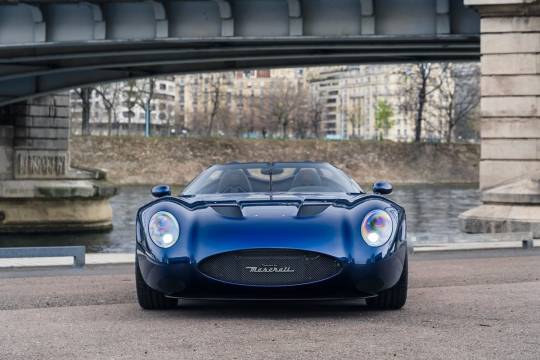

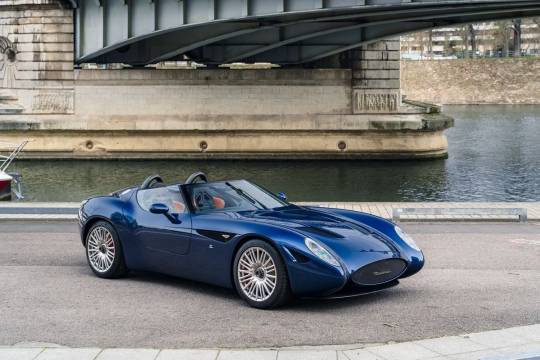



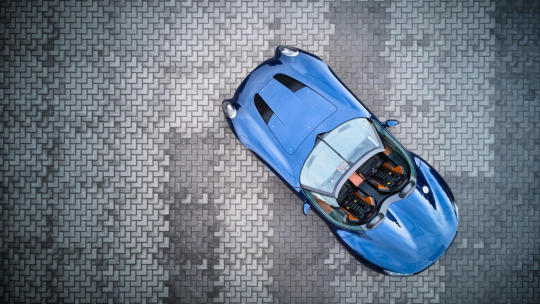


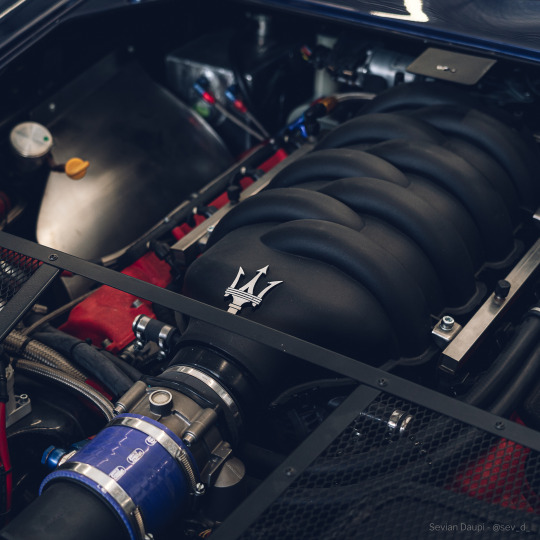
Maserati Mostro Barchetta Zagato (1 of 5).
Any Zagato has always been something extraordinary and has been so now for over 100 years, that the company has been in existence. The Zagato Mostro is no exception. The first Mostro to be introduced to the world was the Gullwing Coupe version, and no better way to reveal such a beauty than at Villa d’Este Concours d’Elegance in 2015 under 250 km away from the factory where the soul and spirit of the Mostro was brought to life, to the celebration the 100th anniversary of Maserati. Seven years would pass by before the presentation of the roofless version of the Coupe version, the Zagato Mostro Barchetta as it was given by name . This hyper exclusive car was limited to a production run of only five cars, of which all were sold. The Mostro coupe was made as a tribute to the Maserati 450 S which the late great racingdriver Juan Manuel Fangio drove in 1956 race in Buenos Aires. This very powerful race car had had been redesigned in 1957 by British designer Frank Costin to much more aerodynamic principles, and then hand built in Milan by Zagato. It was to be raced by Sir Stirling Moss in the 1957 24 Hours of Le Mans, which Sir Stirling then dubbed that car ¨The Monster¨, as the more aerodynamic lines were not conventionally more pretty. In this sense the Zagato Mostro Barchetta is truer in its nature as the original race car was a roofless car also. To keep the spirit as close to a race car as possible Zagato decided to use a genuine racing car chassis.
Therefore, underneath the lovely design from Norihiko Harada there lies a lightweight chassis built by Gillet. Gillet has been around since the start of the 1990´s, and is most known for building lightweight chassis, made from carbon fibre and formula 1 inspired materials. The Zagato Mostro Barchetta is not only incredibly successful in terms of design, but a true masterpiece of automotive engineering too. This is the type of a stunning supercar you can only achieve with a collaboration between two legendary Italian brands - Maserati and Zagato. The engineering performance of this car is not to be overlooked, as under the elegant bonnet of the Zagato Mostro Barchetta lays pure music to your ears: a 4.2-liter V8 Maserati engine that delivers a 420 BHP to the rear wheels via a manual sequential six-speed gearbox. When entering the Zagato Mostro Barchetta the driver is meet with a luxurious and comfortable environment with a spectacular combination of carbon fibre and aluminium. To sum up the Zagato Mostro Barchetta it is a modern masterpiece of automotive haute couture, with each one of the only five produced being hand-built to showcases the exquisite attention to detail and craftsmanship. It is not all about looks either as the Mostro not only offers great performance but also the now rare satisfaction of selecting the gears manually and enjoying the Maserati V8’s bark with each gearchange. Surely the Mostro with all its history and spectacular looks is a great collector’s car, that is also a very engaging drive.
80 notes
·
View notes
Video
youtube
Rear End Chevy Build Part 1
0 notes
Photo


Manufacturer The Scott Motorcycle Company Production1938 -1939 Engine986 cc three-cylinder two-stroke SuspensionWebb girder front forks and DMW rear swinging arm Brakes8 in drums Tires3.25 x 20 front and rear Wheelbase60.5 inches (154 cm) Weight490 pounds (220 kg) (dry)
The Scott designer William Cull had been experimenting with three-cylinder two-strokes throughout the 1930s and had developed a prototype 747 cc engine. The Scott Model 3S which was unveiled at the 1934 Olympia Motorcycle Show[1] was a further development of this work, with the capacity enlarged to 986 cc and a four-speed gearchange. A notable feature of the Model 3S was the lubrication system, which had a throttle-operated pump drawing oil from the sump and delivering it to a geared pump, while a separate geared pump dealt with the return. Another unusual feature was that fuel was held in 'pannier' containers each side of the rear wheel so the apparent fuel tank was actually a dummy housing the instrumentation and control box (a feature later copied by the Honda Gold Wing). Only eight were produced before the outbreak of World War II. The final Model 3S is on display at the National Motorcycle Museum
53 notes
·
View notes
Photo



Subaru Impreza GB270 Sport Wagon, 2007, by Prodrive. A last of the line special edition of 100 cars for the UK market with power boosted to 266bhp (up from 226), lowered Prodrive suspension, 18in black alloy wheels, a quickshift gearchange, a waistline spoiler, tinted privacy glass, a limited slip diff and a black mesh grille.
#Subaru#Subaru Impreza#Subaru Impreza GB270#2007#sportwagon#special edition#limited edition#Prodrive#boxer engine#tuned car#2000s
145 notes
·
View notes
Text
Energy Management in Electric Fleets

Introduction
The efficient and economical functioning of electric vehicles (EVs) within a fleet is dependent on energy management in electric fleets. Understanding and optimizing energy management is crucial given the rapid adoption of EVs across a variety of industries, including public transportation, delivery services, and corporate fleets. An overview of the main ideas and tactics in energy management for electric fleets will be given in this introduction.
1. Understanding Electric Fleets:
A collection of electric cars employed for delivery, service, or other tasks make up an electric fleet.
Battery electric cars (BEVs), plug-in hybrid electric vehicles (PHEVs), which combine electricity and conventional fuels, and hydrogen fuel cell vehicles are examples of electric vehicles.
2. Benefits of Electric Fleets:
Reduced greenhouse gas emissions: Depending on the kind, EVs may have minimal or no tailpipe emissions.
Lower running costs: Fuelling costs are reduced because electricity is typically less expensive than gasoline or diesel.
Savings on maintenance: Electric cars typically have fewer moving parts and need less maintenance.
3. Elements of energy management:
Charging Infrastructure: Establishing an effective charging infrastructure is an essential component of energy management. This entails picking the appropriate charging stations, placing them optimally, and making sure that the vehicles in the fleet can use them.
Route Planning and Optimization: Optimal routes can be planned by using software tools and algorithms that take into account variables including vehicle range, the availability of charging stations, and traffic conditions. By doing this, energy usage is reduced and efficiency is increased.
Battery Management: Battery management is essential to extending the life and performance of electric vehicle batteries. Controlling temperature, preventing deep discharges, and improving charging and discharging patterns are all part of this.
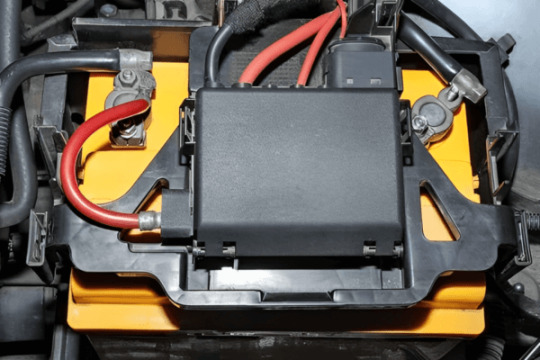
Energy Monitoring: Fleet managers may monitor energy usage, range, and other performance indicators in real time by installing telematics and energy monitoring systems in their cars.
4. Important Energy Management Techniques
Time-of-Use (TOU) Charging: Charging automobiles during times when power prices are lower, such as off-peak hours, can significantly minimize operating expenses.
Fleet Electrification Strategy: Based on variables like daily mileage and accessibility to charging infrastructure, determine which vehicles in the fleet are appropriate for electrification.
Regenerative Braking: Utilize regenerative braking technologies to recover energy during braking, which is subsequently applied to refuel the battery.
Smart Charging: Implement smart charging strategies that enable load control and prioritize charging in accordance with vehicle requirements and energy availability.
5. Fleet Education and Training:
To guarantee effective energy management, drivers and fleet managers must receive the proper training. Best practices for EV operation should be known by drivers, and fleet management should be knowledgeable about the software and infrastructure available for charging.
6. Data Analysis and Continuous Improvement:
To find areas for improvement, periodically review data gathered from the fleet’s EVs and charging infrastructure. Making decisions about fleet replacement or expansion, as well as modifying charging schedules and route optimization, may all fall under this category.
Advantages of Energy Management in Electric Fleets
A variety of benefits that energy management in electric fleets provides make it a crucial part of running and optimizing electric vehicle (EV) fleets. These benefits help fleet operators as well as further economic and environmental objectives. Here are a few significant benefits:
1. Cost Savings:
Lower Fuel Costs: Compared to gasoline or diesel, electricity is often more affordable. In the long run, fleet operators will find that EVs are cost-effective since they provide significant fuel cost reductions.
Reduced Maintenance Expenses: Compared to vehicles powered by internal combustion engines, electric vehicles have fewer moving parts, which over time results in lower maintenance and repair expenses.
2. Operating Costs Are Lower:
Lower Total Cost of Ownership (TCO): Compared to conventional vehicles, EVs frequently offer a lower TCO when fuel and maintenance costs are taken into account.
Energy management allows fleet managers to more effectively estimate and control their energy expenses as compared to the erratic prices of fossil fuels.
3. Environmental advantages
Reduced Greenhouse Gas Emissions: EVs emit almost no tailpipe emissions, lowering the fleet’s carbon footprint and aiding in the fight against global warming.
Improved Air Quality: Since electric cars have zero exhaust emissions, they help to minimize local air pollution in cities.

4. Energy Efficiency:
Higher Energy Efficiency: Compared to vehicles powered by internal combustion engines, electric vehicles are intrinsically more energy efficient. By making sure that energy is used efficiently and reducing waste, energy management systems can further maximize this efficiency.
5. Range Optimization:
Route Planning: By taking into account variables like battery range and the accessibility of charging infrastructure, energy management tools and software can optimize routes to make sure that EVs can finish their missions without running out of power.
Reduced Range Anxiety: Effective energy management lowers the possibility that vehicles will run out of power while in use, which helps to lessen driver stress and boost fleet dependability.
6. Flexibility and Load Balancing:
Load management: By scheduling charging during off-peak times, energy management systems can ease the load on the electrical grid and benefit from lower electricity prices.
Integration for Vehicle-to-Grid (V2G): Bi-directional charging is made possible by some energy management systems, allowing EVs to discharge energy back into the grid as necessary and possibly earning money for fleet managers.
7. Fleet Performance Monitoring:
Real-time data: Energy management systems offer data on energy use, battery health, and vehicle performance in real-time, enabling fleet managers to make wise decisions and optimize operations.
8. Compliance and Sustainability Goals:
Meeting Regulations: To cut emissions and encourage the usage of electric vehicles, many areas and governments are putting laws into place. Fleets can comply with these legal standards with the aid of efficient energy management.
Corporate Social Responsibility: Business Social Responsibility Utilizing electric fleets helps fleet operators improve their reputation and image by advancing environmental and corporate social responsibility goals.
Disadvantages of Energy Management in Electric Fleets
While energy management in electric fleets has many benefits, there are also drawbacks and difficulties that fleet managers may run across. To successfully handle and eliminate these potential downsides, it is crucial to be aware of them. The following are some drawbacks:
1. Upfront Costs:
Investing in an energy management system and switching to electric vehicles might be expensive upfront because you have to buy the cars, set up the charging stations, and integrate the software. Some fleet operators may find these expenditures prohibitive, however, they are frequently made up for in the long run by savings.
2. Limited range and inadequate infrastructure for charging
Range Anxiety: Drivers of electric vehicles may experience anxiety because they worry about running out of battery power while driving because their range is often less than that of conventional automobiles.
Charging Infrastructure Gaps: It may be difficult to provide fleet vehicles with convenient and timely charging in some areas due to a limited or uneven distribution of charging infrastructure
3. Charging Time:
Refueling a conventional vehicle with gasoline or diesel can take much less time than charging an electric vehicle. The productivity of the fleet may be impacted by this downtime, particularly if cars must be charged throughout the working day.
4. Battery Degradation:
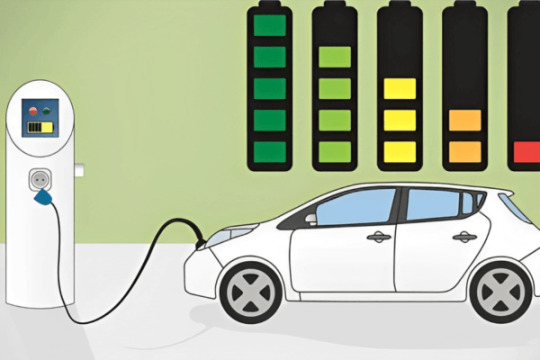
5. Variability in Energy Costs:
Energy costs might vary based on location and time of use, despite the fact that electricity is often less expensive than gasoline or fuel. To save energy expenditures, fleet managers must carefully control where and when to charge their vehicles.
6. Limited Vehicle Options:
The types of activities that can be electrified may be limited due to the lack of electric vehicle models that are suitable for particular fleet needs (such as heavy-duty trucks or specialty vehicles).
7. Dependence on Grid Reliability:
Electric fleets are dependent on an electrical system that is reliable. The necessity for backup power options or grid stability enhancements is highlighted when there are grid interruptions or power outages that impede charging and vehicle operations.
8. Environmental Impact of Battery Production:

Conclusion:
Energy management in electric fleets is a critical and evolving discipline that holds great promise for the transportation industry and the broader effort to reduce greenhouse gas emissions. As the world shifts toward cleaner and more sustainable energy sources, the electrification of fleets plays a pivotal role in achieving environmental, economic, and operational goals.
In conclusion, energy management in electric fleets represents a significant opportunity for organizations to reduce their environmental footprint, cut operating costs, and contribute to a more sustainable and efficient transportation ecosystem. While challenges exist, the benefits of electrifying fleets are substantial and far-reaching, making it a strategic and environmentally responsible choice for the future of fleet management.
#EnergyManagement#ElectricFleets#gearchanger#dorleco#controlsystem#ADAS#ControlStrategies#stroke#automotive#controlunit#PowertrainControl#Anti-lock Braking System
0 notes
Photo

Land Rover & Jaguar gear selector, gear change shift, gear shift knob module bench test platform, special for Gear selector module repair engineer to perform a test after repair: https://www.u-obd.com/pro.../jlr-gear-shifter-test-platform/#landrover #jaguar #JLR #RANGEROVER #FREELANDER #EVOQUE #XJL #Gearshifter #gearselector #gearchanging #simulator #repairtools
1 note
·
View note
Text
watching is a favourite pastime along the river
On his various trips to Washington, he exchanged Irish rugby jerseys for Camp David cufflinks yellow with blue insets. "Alastair Campbell in London is a pal, and he gave me a shoebox full of cheap jerseys cufflinks that relate to the House of Lords and the House of Commons. I was even offered a pair of George Bush cufflinks, but I declined they were very much red cowboy style.
Armstrong is known for his fierce aggression, Hamilton is known for his sweet nature; the French press has cast him as Luke Skywalker to Armstrong's Darth Vader. But don't ask him the obvious question. "Nice guys don't always finish second," he insists.
The movement regards the street drive as just another way of proselytising, says Mark O'Malley, a spokesperson at the Office of Public Information for Jehovah's Witnesses. And there have www.cheapjerseysofchina.com been many different tactics. "'Photo Drama of Creation' was released in 1914.
Fabian Cancellara retained the yellow jersey after crossing in the main pack.The flat fourth stage was significantly more accommodating for riders following three days of tough cycling in slick conditions and over cobblestones which saw a series of crashes.Frenchman Dmitri Champion attacked after 1.5km and was quickly joined by Francis De Greef, Nicolas Vogondy, Iban Mayoz and Inaki Isasi. The quintet stayed clear until Cheap Jerseys from china the final few kilometres when the field finally came back together to contest the bunch sprint.Cavendish was perfectly positioned to make up for crashing in Sunday's sprint but after good wholesale jerseys from china work from his team mates, he sat up short of the line as Petacchi stormed to victory just ahead of Julian Dean (Garmin Transitions) and Team Sky's Edvald Boasson Hagen.The 36 year old Petacchi also won Sunday's first stage into Brussels in his first Tour since 2004, the year after claiming a hat trick of sprint victories."I'm not like a little old man, as some have said. This win is really important wholesale jerseys from china for me and for the team," said Petacchi, who played down claims he only won the opening stage because a crash took out many rivals, including Cavendish."I've come here to win stages cheap nfl jerseys and I've shown twice that I'm not here to make up the numbers."In the over 200 sprints I've done I've learned a thing or two.
There I am taking in the three red top girls, cheap nfl jerseys their jerseys spelling S U N over their white mini kilts. Mini's the theme: "Wow, it's mini week in The Sun, and it's going to be colossal fun". So how about this sporty new automatic Mini. Chad L. Budde, La Ca There are a variety of ways nfl jerseys a quarterback can get a play cheap nfl jerseys call. wholesale nfl jerseys from china The most common is by way of the coach to quarterback radio earpiece in his helmet.
Nevertheless, the guy who first discovered "it" took a screenshot and uploaded it to Twitter via his PS4. Whereupon he was banned by Sony for being a dirty pornmonger. responded by chickenshitedly nuking the realistic crotch from the game, before presumably www.cheapjerseys-football.com heading round to players' houses and smashing their mirrors before they glimpsed anything that might traumatize them..
"I know wholesale nfl jerseys I'm the projection for many of those wounded men," Clinton once said, as quoted in "Hillary's Choice," a 1999 book by Gail Sheehy. "I'm the boss they never wanted to have. "In fact, I think running on her gender would be the SAME mistake as 2008, ie having a message at odds with what voters ultimately want," Robby Mook, her eventual campaign manager, wrote in a message later hacked and released by WikiLeaks.
It like you go to work out and you put rubber bands around your legs, that what it like. Every push is that much worse. I said, 'I fine with you guys doing whatever you need to do as long as we can move still,' and they're going to make sure we can.
Lest this actually happens then human civilization/culture gathered from eons together and development seen so far shall get destroyed totally. If this does not happen this counter war must wholesale jerseys from china be looked upon as extraordinary only. Two world wars have already taken place.
This is a special room. Hello everyone I'm Hernandez in New York with his ABC news digital special report big election victories last night I think The forecast even further and the name on the tip of everyone's time cheap jerseys today Chris Christie New Jersey governor took the garden state by a big margin. In his victory speech last night governor Chris Christie challenged Washington saying lawmakers should look to New Jersey as a functioning government.
Half day trips are popular for social and family bonding, team building with colleagues or romantic adventures trips for groups of two are welcome. You will take on nine grade 3 and 4 rapids while marveling at the natural beauty of your surroundings. Bird watching is a favourite pastime along the river and you can be sure to spot some unique feathered friends between rapids..
But Nissan has wholesale nfl jerseys from china worked hard to eliminate those critisims, creating their new much smoother X tronic CVT automatic 'box.Nissan has cleverly engineered in steps that now make it feel more like gearchanges from a double clutch gearbox. So there's no more whining and no more rubber band feel, and moreover it delivers the same efficiency you're supposed to get in a CVT.And it works this is www.cheapjerseyssalesupply.com one of the nicest CVT boxes we've tried. It's smooth and quick to react, and in everyday driving it's a delight.
1 note
·
View note
Photo





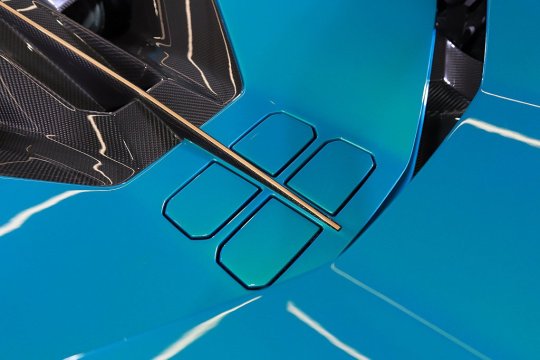
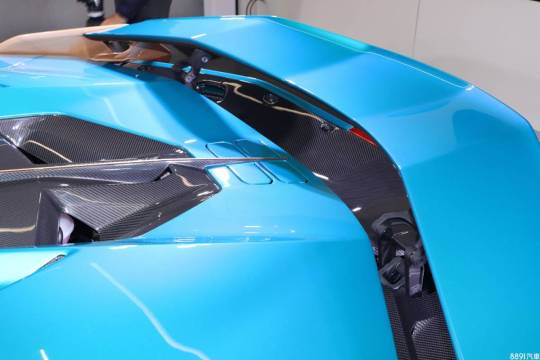

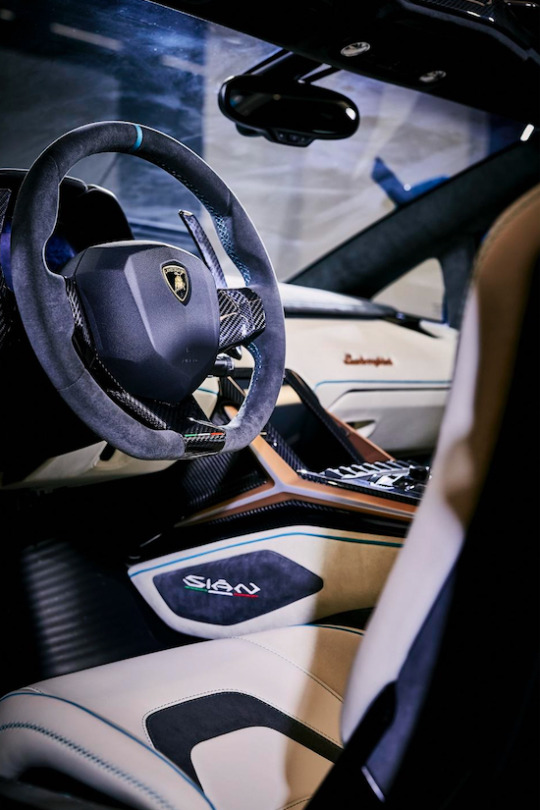
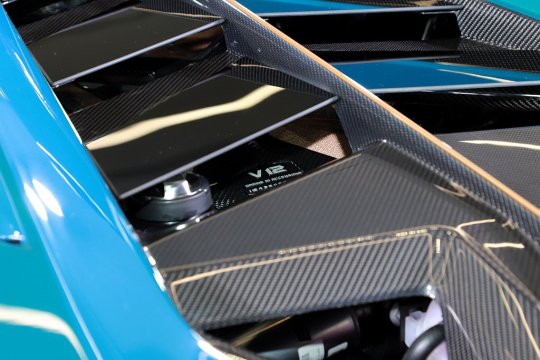
Lamborghini Sián Roadster
Just 19 examples of the Sián Roadster will be built and all have been sold already. Like the striking hard-top Sian revealed at Frankfurt Motor Show, the Roadster takes the bulk of its power – some 774bhp – from an uprated version of the Aventador’s naturally aspirated 6.5-litre V12 and features a 34bhp 48V electric motor integrated into the gearbox for zero-emission low-speed manoeuvres. The electric motor is also used to flatten the Sián’s acceleration curve, kicking in to provide torque fill that mitigates the effects of deceleration during gearchanges. An added benefit of this, Lamborghini says, is that “the pilot will feel only the pull backward of acceleration, eliminating uncomfortable jerking movements”.As a result, the Sián Roadster is claimed to dispatch the 0-62mph sprint quicker than the conventionally powered Aventador SVJ Roadster’s 2.9sec and its top speed is pegged at more than 217mph. A weight figure of under 1650kg is claimed, although we have no indication yet of how much heavier the hard-top is for comparison.At the reveal of the hard-top, Lamborghini claimed that the addition of an electric element to the V12 motor has not affected the powertrain’s trademark sound. Both versions of the Sián can call upon a supercapacitor power storage unit - said to store 10 times more power than a conventional lithium ion battery - to provide instant torque boosts at will while travelling at speeds of up to 81mph. The device, evolved from that used to power the Aventador’s starter motor, weighs just 34kg, giving a power-to-weight ratio of 1bhp per 1kg and ensuring minimal impact on performance. Symmetric power flow means it charges using energy recovered under braking at the same rate as discharging, providing maximum efficiency.
The Sián’s trademark design features are carried over unaltered, including the six Countach-inspired brake lights, hexagonal exhaust exits, Y-shaped headlights and gaping air intakes at the front and side.
Also featured are heat-sensitive cooling vanes on the rear deck that rotate according to the engine temperature, aerodynamic ‘airstreamers’ at the rear and a retractable spoiler that sits flush with the engine lid while the car is stationary. According to Lamborghini, removing the roof has had no effect on the Sián’s aerodynamic efficiency.
46 notes
·
View notes
Text
Ferrari make further power unit changes ahead of Saudi Arabian GP
Ferrari have made several more power unit changes in the build-up to the Saudi Arabian Grand Prix, with both Charles Leclerc and Carlos Sainz taking on fresh elements. Earlier this week, Ferrari confirmed that Leclerc would be hit with a 10-place grid penalty for round two, having been forced onto a third control electronics component after his retirement in Bahrain. READ MORE: Ferrari confirm Charles Leclerc will be hit with grid penalty for Saudi Arabian Grand Prix On Friday, as cars rolled out of the pit lane at the Jeddah Corniche Circuit, documents issued by the FIA confirmed Leclerc’s control electronics replacement, along with a host of other substitutions. Indeed, Leclerc and team mate Carlos Sainz have taken on new internal combustion engines for the weekend, with Leclerc also getting a fresh MGU-H – as part of what the team has described as “a further precaution”. This feature is currently not available because you need to provide consent to functional cookies. Please update your cookie preferences 2023 Bahrain Grand Prix: Leclerc cries ‘no power!’ as he’s forced out of the race from P3 Meanwhile, Mercedes-powered McLaren have replaced a host of power unit components in Lando Norris’s car, following his own issue-affected Bahrain Grand Prix. At Red Bull, Sergio Perez has been given his second energy store and control electronics, along with a new gearbox case and cassette, and new gearbox driveline, gearchange components and auxiliary components. READ MORE: Leclerc remains confident that ‘something special is definitely possible’ in Jeddah despite 10-place grid penalty As it stands, Leclerc is the only driver who will take a grid drop in Jeddah for exceeding his power unit allowance, with the rest of the changes being made penalty-free. via Formula 1 News https://www.formula1.com
1 note
·
View note
Photo


From Bonhams
1977 TRIUMPH 750CC T140V 'STRONGBOW' FLAT TRACKERREGISTRATION NO. NOT REGISTEREDFRAME NO. MD2ENGINE NO. T140V AP81386• One of a batch of six or seven produced • Built by Triumph for flat-track racing in the UK• Inspired by the Trans-Atlantic Match Race road-racing series• We are advised that the machine offered here has a works engine with high compression pistons and larger-than-standard carburettors
The machine offered here is one of a batch of six or seven (sources vary) T140V Bonnevilles built by Triumph for flat-track racing in the UK towards the end of 1977. Cider maker Bulmers was involved in sponsoring grass-track racing to promote its Strongbow brand, and commissioned Triumph to build these special Bonnevilles, the idea being to establish a 750cc class for solo machines. The transformation involved reverting to a right-side gearchange, standard up to 1975. Inspired by the Trans-Atlantic Match Race road-racing series, a special event was staged that pitted six British riders on the Triumphs against a 'Rest of the World' team that included Ole Olsen, Barry Briggs and Ivan Mauger.
The British were represented by Chippy Moore, Malcolm Carradine, Barry Robinson, Rob Lidgate, Alec Lidgate and Paul Pinfold. We are advised that the machine offered here has a works engine with high compression pistons and larger-than-standard carburettors. The frame has been modified to move the shock absorbers' lower pivot to the wheel spindle, and the headstock angle changed to give better steering. Most of the bikes, when they were returned to the factory, were gradually dismantled for parts.
This machine is believed to be the only one surviving in original condition.
8 notes
·
View notes
Photo

Next stop #usa #clutch #gas #gearchange #dropdaclutch #holdontight #movies🎬 #popcorntime #history #byebye #kneesliders #book #script #poetry #growing #brainusage #family #first #gym #organic #fruit #healthybreakfast #action #wire #4seasons #sfx #onelife Have A Fantastic Weekend 💯❤️🐺🌎Follow your instincts not Blah & you will never go wrong 👍🏻☃🎾🇮🇹🐺👌🏻👊✌️ (at North Pole - Antartica)
#family#movies🎬#gearchange#popcorntime#wire#usa#script#healthybreakfast#poetry#book#dropdaclutch#kneesliders#4seasons#sfx#gym#gas#action#fruit#byebye#organic#clutch#brainusage#onelife#holdontight#growing#history#first
3 notes
·
View notes
